Understanding 401(k)s vs. 403(b)s: From a Financial Advisor
May 20, 2025
If you are planning for retirement, you will probably come across two common employer-sponsored savings plans. These are the 401(k) and the 403(b).
These plans are powerful tools for building long-term wealth, but they’re designed for slightly different groups of workers. You usually don’t get to choose your type of job benefits. Your employer decides that.
However, it’s helpful to know how they compare. This is especially true if you’ve changed jobs or worked in both public and private sectors.
What’s a 401(k), Anyway?
A 401(k) is the most widely used retirement plan in the U.S., offered by many private-sector companies. About 70 million Americans rely on 401(k)s to build their retirement nest egg. These plans allow you to save a portion of your paycheck before taxes are taken out, helping reduce your taxable income in the process.
Key benefits:
● Contributions are automatic—taken right out of your paycheck.
● Many employers match a portion of what you save, giving your savings a nice boost.
● Your investments grow tax-deferred, meaning you won’t pay taxes on the gains until you take money out in retirement.
● Some plans offer Roth 401(k) options, where you pay taxes upfront but enjoy tax-free withdrawals later.
● Investment choices often include mutual funds, and sometimes ETFs or stocks if a self-directed option is available.
Potential drawbacks:
● Withdrawals before age 59½ are usually subject to a 10% penalty and income tax (though some exceptions apply).
● You must start taking required minimum distributions (RMDs) by age 73. This rule does not apply if you are still working and own less than 5% of the company.
● Contribution limits are capped. In 2025, you can put away up to $23,500, with catch-up contributions for older savers.
What About a 403(b)?
If you work for a public school, hospital, church, or nonprofit, your employer may offer a 403(b) plan. Though similar in many ways to a 401(k), the 403(b) is tailored to employees in the nonprofit sector.
Highlights include:
● Automatic payroll deductions make saving effortless.
● Employer contributions may be made directly to your 403(b) or sometimes to a separate 401(a).
● You can defer taxes on your investments or opt for Roth contributions if available.
● Employees who have worked for 15 years or more can add an extra $3,000 each year. This can go up to a total of $15,000 over their lifetime. This option is not available with 401(k) plans.
Limitations to watch for:
● Early withdrawals before 59½ typically come with penalties and taxes.
● Like 401(k)s, RMDs begin at 73 (or 75 for certain older plans).
● Investment choices may be more limited, often restricted to annuities and mutual funds.
● Contribution limits mirror those of 401(k)s, including catch-up opportunities for older workers.
401(k) vs. 403(b): What They Have in Common
Despite the different audiences, these plans share many features:
● Both offer tax-deferred growth and Roth options.
● They have identical contribution limits and allow for catch-up contributions after age 50.
● Both may offer employer matches—free money if you take advantage.
● Loans are often available (though repayment becomes urgent if you leave your job).
● You’ll face penalties for early withdrawals and need to plan for RMDs in your 70s.
Do You Have to Choose?
Most people don’t have to pick between a 401(k) and a 403(b)—your employer usually offers just one. But there are exceptions. For example, some higher education institutions may offer both. Or if you work two jobs—say, one in the private sector and another at a nonprofit—you might have access to both plans.
Just remember: contribution limits apply across both plans combined. You don’t get to double up on your total.
How to Get Started with a 401(k) or 403(b)
If you’re eligible for one of these plans, here’s how to make the most of it:
1. See if you’re automatically enrolled. Many employers start new hires at a default contribution rate. If not, ask HR how to enroll.
2. Adjust your contribution rate. Try to contribute at least enough to get the full employer match. Aim for 15% of your pre-tax income (including the match) if possible.
3. Decide how hands-on you want to be. You can manage your own investments or work with a financial advisor—some plans even offer automated tools.
4. Explore your investment choices. Target date funds and asset allocation funds can offer diversified, hands-off investing that adjusts over time.
5. Review your plan regularly. Check in at least once a year to make sure your strategy still aligns with your retirement goals.
Bottom Line
Whether you’re contributing to a 401(k), a 403(b), or both, the key is to start saving early and stay consistent. Your workplace may decide the specific plan you use. However, the main goal is the same: to give your future self the financial freedom to retire on your own terms.
Sources:
https://www.fidelity.com/learning-center/smart-money/401k-vs-403b
Disclosures:
This information is an overview and should not be considered as specific guidance or recommendations for any individual or business.
This material is provided as a courtesy and for educational purposes only.
These are the views of the author, not the named Representative or Advisory Services Network, LLC, and should not be construed as investment advice. Neither the named Representative nor Advisory Services Network, LLC gives tax or legal advice. All information is believed to be from reliable sources; however, we make no representation as to its completeness or accuracy. Please consult your Financial Advisor for further information.

